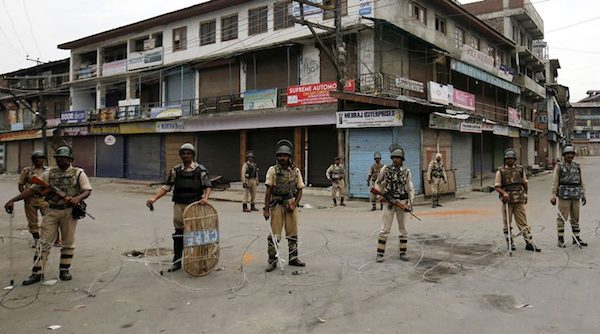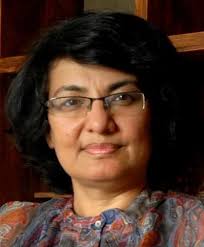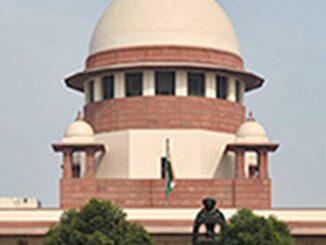

“The BJP government’s move has, however, not only completely swung the pendulum but is also antithetical to the very idea of inclusivity. By turning J&K, especially the Valley, into a virtually open air prison, with a full clampdown and information blackout, the message is clear: that New Delhi alone will decide the political future of the people of J&K with no room for any consultative process and no space for dissent.”
The Kashmir move affects the robust nature of Indian democracy in addressing internal conflicts and alienation
The recent abrogation of Article 370 ending the special status of Jammu & Kashmir (J&K) in the Indian Constitution along with the Jammu and Kashmir Reorganisation Bill, 2019, bifurcating the State into two Union Territories (J&K and Ladakh), have delivered a knock-out blow to the long-drawn-out peace process in Kashmir.
These moves also herald a paradigm shift in the fundamental premises and parameters of India’s approach towards the Kashmir issue, with long-term implications for its political strategy of tackling such internal conflicts. There are three cardinal principles which successive political regimes have hitherto followed in addressing internal conflicts and seeking political reconciliation with alienated segments of the populace. These in turn have bolstered the robust and resilient nature of Indian democracy. The future, however, appears much more uncertain. Here is why.
Accommodative parameters
The first principle entails adhering to the letter and spirit of the Indian Constitution. Its far-sighted and malleable nature has stood the test of time. Since 1947, India has faced a wide-ranging nature of political demands ranging from secession, to the creation of a separate State for Jammu, Union Territory status for Ladakh and others seeking affirmative discrimination for the Dogri language, Scheduled Tribe status for Gujjars and Paharis and so on.
In response, the central leadership has tried finding ways and means within the overarching parameters of the Indian Constitution and have rarely been disappointed. In view of the difficult circumstances under which the Dogra Maharaja Hari Singh had acceded to India, Article 370 itself offered an excellent example as to how the special needs and political aspirations of the people of J&K could be politically and constitutionally accommodated by India’s Constitution makers.
Decades later, when Ladakhi Buddhists launched an agitation in 1989, demanding Union Territory status, the Indian Constitution once again made space for political experimentation by introducing intermediate state structures — the creation of two autonomous hill councils for Leh and Kargil.
Weakening federalism
Against this backdrop, it is for the first time in independent India’s history that the Bharatiya Janata Party government has used constitutional provisions for opposite ends: to undermine and weaken India’s federal character by downgrading a State and territorially dividing it into two Union Territories without the consent of the people of J&K.
The method adopted to execute this decision is of special concern because by equating or replacing the Constituent Assembly of J&K (which was dissolved in 1957) with the Legislative Assembly of J&K, and Parliament appropriating the latter’s powers since the State is under President’s rule, the Central government has acted unilaterally to reorganize the State of J&K.
This rests not only on legally shaky ground but also flies in the face of constitutional norms and propriety. If this passes judicial scrutiny, it can then be done to any State in India, with drastic implications for its federal character.
The second principle pertains to the maxim of ‘inclusivity’, that is, a political demand being made must be inclusive in terms of representing the interests of all those in whose name it is made. This supported bridge building and coalition-making among different communities certainly helped in shaping the peace process, in turn bolstering India’s deeply diverse and plural character.
In J&K’s context too, it has also proven to be a critical common factor helping to explain the failures and successes of various political demands. The Kashmiri idea of self-determination in a multi-ethnic, multi-religious and multi-lingual society, for instance, was to call for a plebiscite as mandated by the UN resolutions of 1949 or seek an independent and sovereign State of J&K, but this was not the approach taken by other communities such as the Dogras, Kashmiri Pandits, Gujjars, Bakkarwals, and Ladakhi Buddhists. In the 1950s, as indeed in the 1990s, the demand by Kashmiri Muslims for a right to self-determination or azadi was politically checkmated by these communities as their political choices were very different; time and again, an exclusively Valley-focused approach has doomed the prospects of the peace process.
Demographic impact
The BJP government’s move has, however, not only completely swung the pendulum but is also antithetical to the very idea of inclusivity. By turning J&K, especially the Valley, into a virtually open air prison, with a full clampdown and information blackout, the message is clear: that New Delhi alone will decide the political future of the people of J&K with no room for any consultative process and no space for dissent.
The decision to divide the State is particularly fraught with the risk of deepening regional and communal fault lines. While Ladakhi Buddhists, for instance, are now celebrating the fulfilment of their long pending demand for Union Territory’s status, the voices of Kargilis who are still under a strict curfew are yet to be heard. They may not support this decision because ‘a Union Territory without a legislature’ not only negates the idea of decentralization of power to the grassroots (the undergirding principle of the autonomous hill council) but could well lead to a shifting of the loci of power to Leh, resulting in losing whatever gains they have assiduously made over the years.
The celebrations by Kashmiri Pandits are anticipated because of the gross injustice and displacement they have suffered since their forced exodus from the Valley in the early 1990s. It remains to be seen whether the abrogation of Article 370 by itself, would facilitate their return to the Valley without the support of local Kashmiri Muslims and rising violence.
Instead of making all communities equal stakeholders in the peace process, the BJP government’s decision may well end up pitching one community against the other. A deepening of societal fissures and communal fault lines do not go hand in hand with the agenda of peace-making.
The third principle refers to a promise and the practices of holding a dialogue process and sharing political power with opponents of all hues. In Kashmir, successive Central governments have until now never shut the door of dialogue in the face of political opponents who have ranged from the Sheikh Abdullah-led Plebiscite Front in the 1960s to the Muslim United Front in the 1980s to the Hurriyat leadership since the 1990s. This also holds true for militant groups.
While the bottom line of Congress governments has been a commitment by their opponents to abjure the path of violence and abide by the Indian Constitution, the erstwhile Vajpayee-led National Democratic Alliance (NDA) regime was even more generous in offering the broad framework of ‘insaniyat, jamhooriyat and Kashmiriyat’.
The Modi government faces an uphill task in identifying credible local partners in ushering in peace to the Valley, which may well end up in facing yet another impasse.
Political fallout
In a significant point of departure, the present government is pursuing a hard, top-down approach. The Home Minister has categorically ruled out any dialogue with militants and the Hurriyat and has even castigated the mainstream regional political leadership of the National Conference and Jammu and Kashmir Peoples Democratic Party for being corrupt, promoting family rule and fomenting separatism and violence. This move has nullified the very idea of a process of dialogue and runs the risk of discrediting the mainstream politicians and obliterating the middle ground between the militants and mainstream politicians.
The Prime Minister in his recent address to the nation, expressed hope that new leadership in Kashmir would emerge from grass-roots politics. It is important to note that in 1,407 out of 2,135 halqas or village clusters, there was no voting at all in the panchayat elections that were held in 2018. This does not lend credence to youth being optimistic about joining mainstream politics especially after the abrogation of Article 370, a move which is only likely to deepen the alienation. The Modi government faces an uphill task in identifying credible local partners in ushering in peace to the Valley, which may well end up in facing yet another impasse.
(Navnita Chadha Behera is the author of ‘Demystifying Kashmir’ and ‘State, Identity and Violence: Jammu, Kashmir and Ladakh’)





Be the first to comment